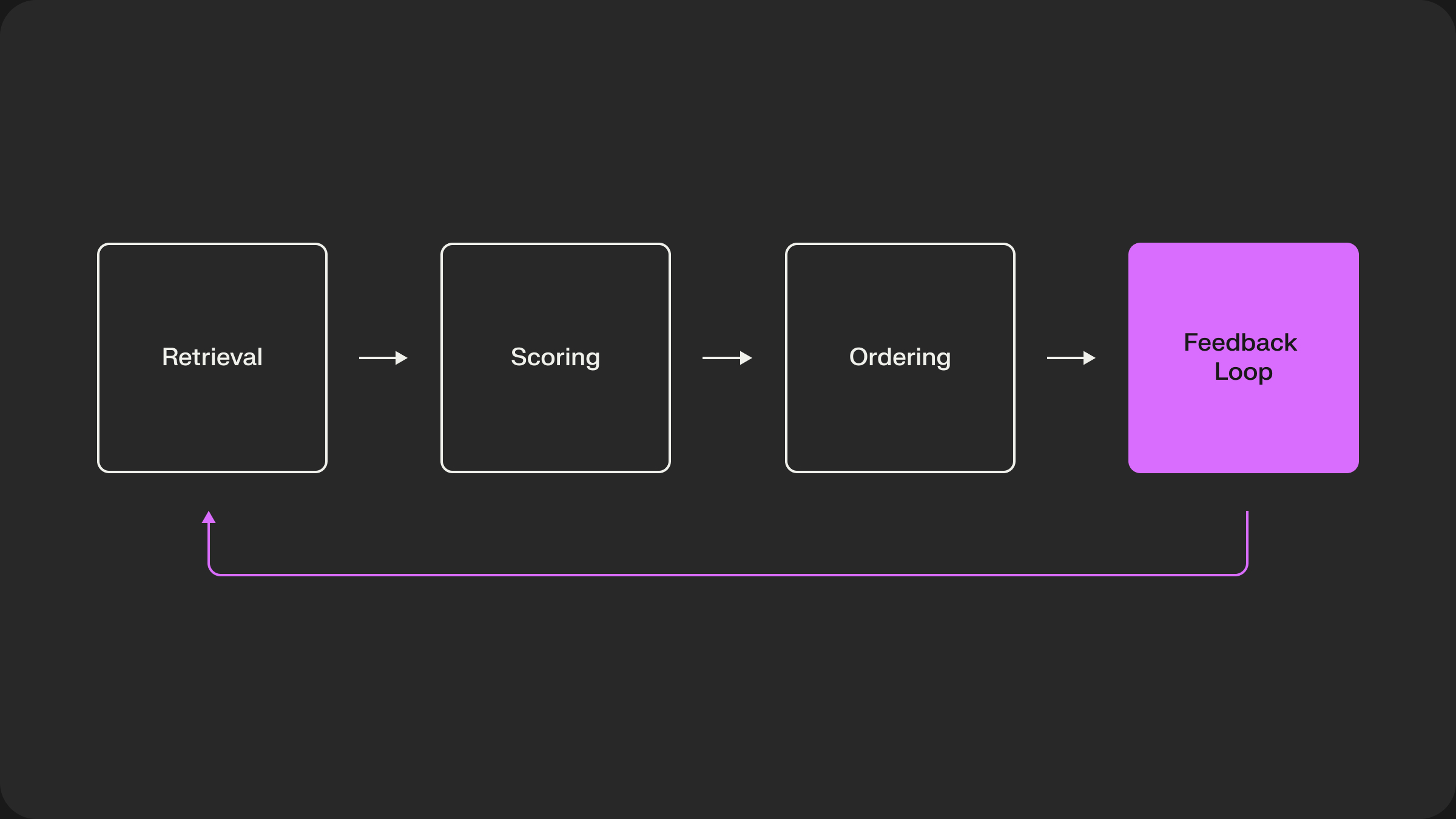In 2025, the fastest-growing e-commerce brands are not manually curating these experiences. Instead, they’re using AI-native APIs that power real-time recommendations in shopping carts, product detail pages (PDPs), checkout flows, and emails.
The question isn’t whether to upsell and cross-sell. The question is which API to trust for personalization, scale, and measurable lift.
Below are the 7 best e-commerce upsell and cross-sell APIs in 2025, starting with Shaped — the only fully AI-native option built for developers, growth teams, and product managers.
1) Shaped
Shaped is an AI-native personalization platform that unifies recommendations, search, and feeds into one ML-first engine. For upsell and cross-sell, Shaped stands out because it can blend multiple objectives (AOV, conversions, diversity, freshness) at inference time — without retraining models.
Why It’s the Best for Upsell/Cross-Sell:
- Real-time personalization: Shaped ingests signals as a session unfolds and re-ranks results instantly.
- Value Modeling: Blend business KPIs directly into rankings (e.g., optimize for AOV while enforcing diversity or seller fairness).
- Warehouse-native integration: Connects directly to Snowflake, BigQuery, Redshift, and Segment with transparent SQL transforms.
- Proven lift: Grocery marketplace Trela increased AOV by 16% using Shaped-powered “similar items” and checkout upsell carousels.
- Flexible placements: Power PDP suggestions, in-cart upsells, “complete the set” widgets, and personalized checkout banners.
Best For: Marketplaces, DTC e-commerce, and apps where product recommendations directly impact revenue.
2) Amazon Personalize
AWS Personalize is Amazon’s managed recommendation service. It provides pre-built recipes like “User-Personalization” and “Similar-Items,” making it accessible for teams already on AWS.
Strengths:
- Fully managed ML infrastructure.
- Integrates with S3, Lambda, and Kinesis.
- AutoML approach means less setup.
Limitations:
- No native search.
- Less transparent than ML-first platforms.
- Pricing can be unpredictable at scale.
3) Algolia Recommend
Algolia Recommend is an add-on to Algolia’s search platform. It’s popular for teams already using Algolia Search and looking to add upsell or related-products functionality quickly.
Strengths:
- Developer-friendly APIs and SDKs.
- Easy integration for Shopify, Salesforce Commerce Cloud, and Adobe Commerce.
- Clear documentation and analytics.
Limitations:
- Search and recommendations are siloed.
- Less adaptive than AI-native platforms.
4) Bloomreach Discovery
Bloomreach is a commerce-focused discovery platform that blends AI-powered search, recommendations, and merchandising. It’s designed for large retailers who want visual merchandising and deep analytics.
Strengths:
- Revenue-focused recommendation logic.
- Pre-built commerce connectors.
- Strong analytics for merchandisers.
Limitations:
- Narrow e-commerce focus.
- Heavier setup than API-first tools.
5) Dynamic Yield
Dynamic Yield (by Mastercard) is an experience optimization platform that includes recommendations alongside testing, targeting, and personalization features.
Strengths:
- Omnichannel targeting (web, mobile, email, SMS).
- Visual tools for non-technical marketers.
- Strong enterprise governance.
Limitations:
- Slower implementation.
- Less transparent ML compared to API-first platforms.
6) Recombee
Recombee is a developer-friendly recommendation API with strong real-time personalization capabilities.
Strengths:
- Transparent, tiered pricing.
- Multiple recommendation types (similar items, trending, personalized).
- Good for startups and mid-market teams.
Limitations:
- Primarily focused on recommendations, not unified search + feeds.
7) Nosto
Nosto is a commerce personalization platform popular with mid-sized retailers. It emphasizes recommendations across PDPs, carts, and emails.
Strengths:
- Easy Shopify/Shopify Plus integration.
- Pre-built templates for upsell/cross-sell.
- Marketing-friendly dashboards.
Limitations:
- Less customizable for engineering teams.
- Focused on SMB/mid-market.
FAQs: E-Commerce Upsell & Cross-Sell APIs
What is an upsell and cross-sell API?
An API that integrates with your app, cart, or product pages to deliver real-time product suggestions — either more premium versions of what a user is viewing (upsell) or complementary items (cross-sell).
Why not just use manual rules for upsell and cross-sell?
Manual rules can work for small catalogs, but they don’t scale. Rule-based systems can’t adapt to each session, handle cold-start items, or optimize for multiple KPIs (like AOV + engagement).
Which is the best upsell and cross-sell API in 2025?
For teams that want ML-first personalization, Shaped is the leader. It unifies search, recommendations, and feeds with real-time learning and Value Modeling — far beyond rules-based systems.
How fast can I implement an upsell API?
- Shaped: Days to weeks (direct warehouse connectors and SQL transforms).
- AWS Personalize: Moderate setup if you’re AWS-native.
- Algolia/Nosto: Quick deployment but less adaptable.
- Dynamic Yield/Bloomreach: Longer enterprise onboarding.
What lift should I expect?
Teams commonly see 10–20%+ increases in AOV when upsell and cross-sell are driven by AI rather than rules. Trela, for example, lifted AOV by 16% with Shaped-powered checkout carousels.
Do I need lots of historical data?
No. AI-native platforms like Shaped leverage semantic embeddings and transfer learning to recommend intelligently from day one — even in cold-start scenarios.




